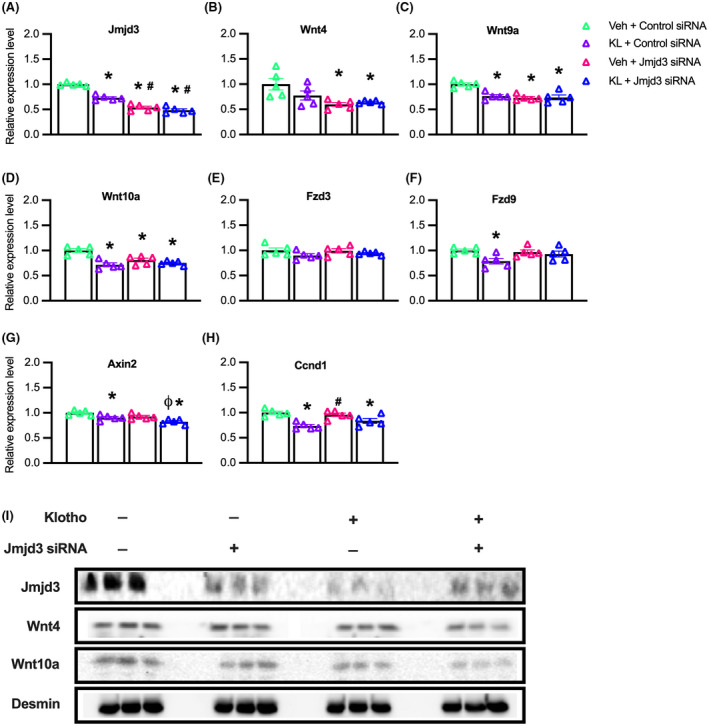FIGURE 7.

Klotho stimulation and Jmjd3 knock‐down do not have additive, inhibitory effects on the expression of Wnt4, Wnt9a, and Wnt10a. (A–I) Myoblasts were treated with vehicle and control siRNA (Veh + Control siRNA), Klotho and control siRNA (KL + Control siRNA), vehicle and Jmjd3 siRNA (Veh + Jmjd3 siRNA) or Klotho and Jmjd3 siRNA (KL + Jmjd3 siRNA). (A–H) QPCR data showing relative expression of Jmjd3 (A), Wnt4 (B), Wnt9a (C), Wnt10a (D), Fzd3 (E), Fzd9 (F), Axin2 (G), and Ccnd1 (H) in KL + Control siRNA, Veh + Jmjd3 siRNA or KL + Jmjd3 siRNA treated myoblasts compared to vehicle‐treated controls. For all bar charts, *indicates significantly different from Veh + Control siRNA treated cells at p < .05 analyzed by one‐way ANOVA with Tukey's multiple comparisons test. #Indicates significantly different from KL + Control siRNA treated cells at p < .05 analyzed by one‐way ANOVA with Tukey's multiple comparisons test. ϕIndicates significantly different from Veh + Jmjd3 siRNA treated cells at p < .05 analyzed by one‐way ANOVA with Tukey's multiple comparisons test. Error bar represents SEM. N = 5 for all QPCR data sets. (I) Western blot analysis showing effects of Klotho, Jmjd3 RNAi or Jmjd3 RNAi with Klotho on Jmjd3 (180 kDa), Wnt4 (50 kDa), Wnt10a (46 kDa), and loading control desmin (60 kDa). Wnt9a protein was undetected in all groups. N = 3 for all groups
